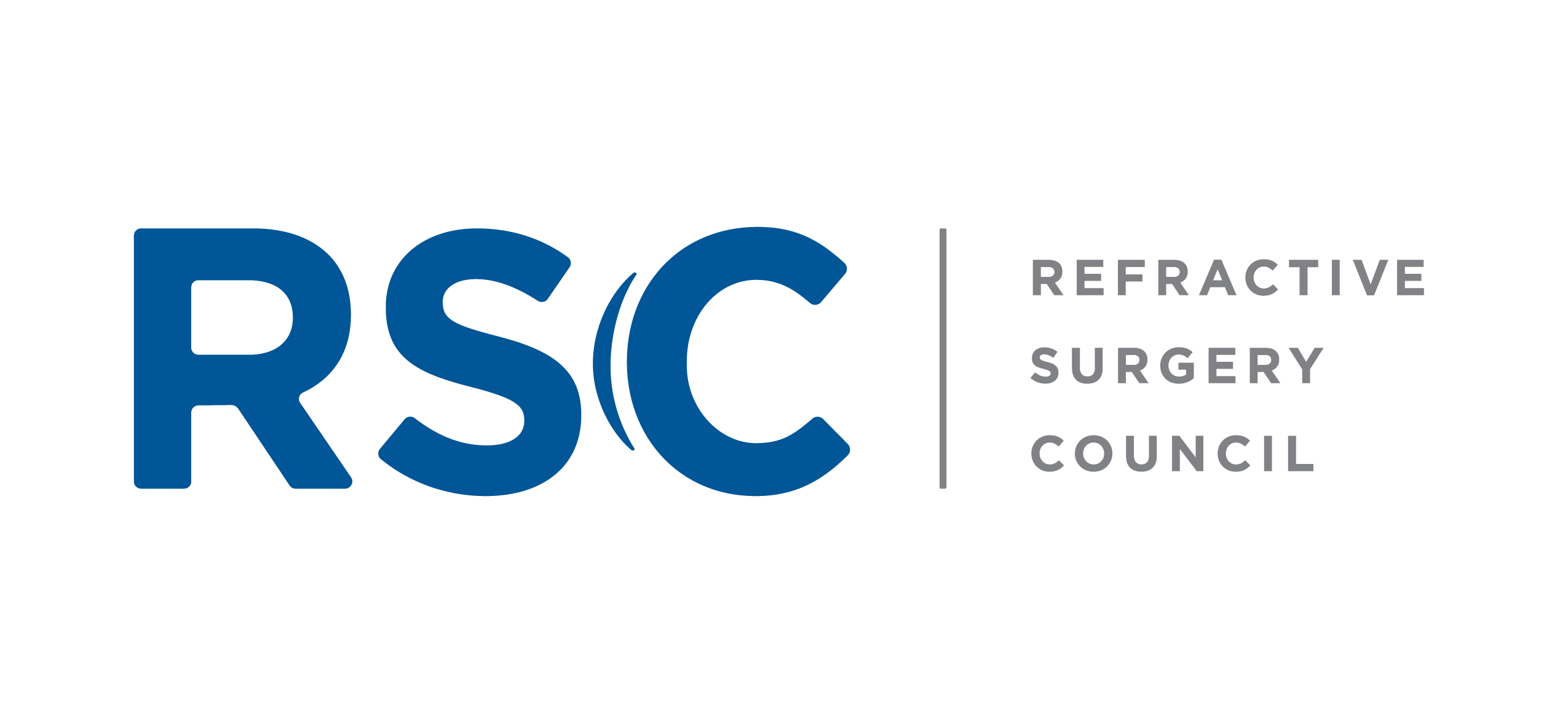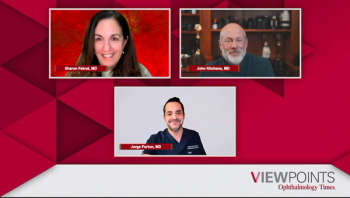
Laser vision correction procedures soar in wake of COVID-19

According to the Refractive Surgery Council, patients continue to have a high level of interest in laser vision correction procedures.
As COVID-19 drove the nation into a lockdown in March 2020, ophthalmology practices were handling only procedures deemed medically necessary.
Even after restrictions were eased, fear of contracting the coronavirus infection caused many patients to cancel or postpone appointments for examinations and elective procedures involving physical visits.
Refractive surgery has proven to be an exception, and seems to have benefitted from a kick start during the COVID-19 era. Laser vision correction (LVC) procedures including LASIK, SMILE and PRK were all put on the back burner. Now, more than 17 months later, the U.S. refractive sector is flourishing in the wake of the COVID-19 pandemic.
As the pressures on public health and safety have given rise to multiple factors motivating people to reevaluate their eye health and vision correction options, demand for LVC procedures continues to increase.
According to data from the Refractive Surgery Council (RSC), consistent, strong growth in LVC procedure volume has been reported since the fourth quarter of 2020. While 2020 was a year of disruptions, 2021 is showing clear promise with procedure volume picking up where it left off in 2018, rising to its highest levels since RSC began tracking in 2015.
What is driving the surge?
According to the RSC, the initial uptick in procedures seen at the end of 2020 leading into the first quarter of 2021 likely represented the pent-up demand from scheduling challenges brought about by the shutdowns. However, pandemic-related vision issues including pervasive complaints of foggy glasses while wearing face masks, stern public health warnings to not touch one’s face or eyes to prevent COVID-19 transmission, and a high prevalence of digital eye strain and dry eye from remote working and learning fueled the ongoing interest in alternatives to glasses and contacts.
“Last year’s stay-at-home orders likely gave people more time to think about and go online to research their vision correction, which affects more than 190 million Americans,” said Jim Wachtman, RSC chairman. “Across our own patient education channels, we saw a significant increase – more than 20 percent – of users deeply exploring all facets of laser vision correction, including options, candidacy, finding the right surgeon and how to pay for the procedure.”
The first quarter of 2021 was characterized by growing optimism as vaccines became more widely available and people began to anticipate life after COVID. RSC’s consumer mindset analysis of organic market data showed that optimism present in consumer interest in LASIK and LVC with increases in online search volume and diversity in search behavior. Relevant social media mentions in Q1 were dominated by viral posts prioritizing plans for LASIK over other cosmetic procedures, demonstrating a strong desire to invest in self-improvement to live life to the fullest.
Consequently, Q2 2021 saw a fundamental shift in consumer priorities around vision correction and more urgency around taking action, resulting in a profound uptick in LVC procedure volume. In fact, LVC performance in the first half of 2021 was the strongest the sector has seen in nearly a decade.
Bolstered by declining infection rates, post-COVID priorities began to take shape and people started to make plans. Certainly travel, restaurants and being with friends and family were foremost in everyone’s mind. However, whether driven by a desire to live one’s best version of life without compromise or the eventualities around return to work and in-person gatherings, many people sought out the quality-of-life benefits of laser vision correction.
A new threat?
The Delta variant of COVID-19 started to gain momentum during the second quarter of 2021. While consumers were running out to buy plane tickets and attending concerts, infections started to rise again. Optimism is here, as is pandemic fatigue, but health and safety concerns persist. The RSC said it anticipates a renewed, but more complex, focus on those issues as the year progresses.
Making the most of the momentum
Throughout 2021, RSC analyzed the search and social media behaviors of those with a stated interest in LASIK and other LVC procedures. This data reveals the topics and context consumers consider when weighing their vision correction options.
According to the organization, its approach is to use these findings to create relevant, timely educational content for
- Readily and transparently answer the most common questions about LVC.
- Accurately position LVC procedures within the spectrum of vision correction options.
- Assist those vision correction patients interested in LVC in making informed decisions by offering balanced, evidence-based analysis of risks and benefits.
- Encourage patients to discuss vision correction options with their eye doctor and see a refractive surgeon to help determine LVC candidacy.
A sample of topics RSC focused on in LVC educational content this year include:
- Recovery
- Safety
- Astigmatism
- Specific cost-related queries, particularly around insurance
Practices can take advantage
Practices can join in this effort to help keep up the momentum behind the LVC resurgence by adding this or similar content to their site blogs and social channels. For example, search data has shown a steady uptick in queries around LASIK and insurance for the past couple of years.
Practices participating in vision plans with LVC benefits would do well to position the information prominently on their websites and serve up their insurance facts on social channels, thereby providing personalized answers to a popular question about LASIK. Similarly, the subject of astigmatism as it relates to LVC candidacy and efficacy, remains a persistent source of confusion. Adding facts about LVC and astigmatism to practice online channels helps dispel the myths and helps prospective patients make better decisions.
RSC also works to find opportunities within the cultural narrative to discuss vision correction within a broader, yet relevant context. We join the conversation topics prospects are currently interested in such as:
- Travel
- Self-care and self-improvement
- Outdoor recreation
- Lifestyle profiles
By placing vision correction within these popular topics, RSC’s content publication and syndication efforts help to bring LVC back to top-of-mind among people who may have been considering a procedure for a while but have been distracted as other discretionary spending opportunities become more available. RSC’s content is available to practices to serve as inspiration for their own blog and social editorial calendars, or to use outright.
There is no such thing as too much education, and today’s LVC prospective patients are eager information seekers. Together, the industry can help ensure everyone who can and should consider LVC has access to relevant, decision-making information.
While some of the pandemic-related factors fueling the interest in refractive surgery may disappear over time, others are likely to continue.
Eager patients
Christopher L. Blanton, MD, of the Inland Eye Institute in Colton, California, pointed out that he believes patients who are contemplating refractive surgery are also eager to have it sooner than later, thinking that offices may need to close again in the future if community infection rates increase amid concerns of the Delta variant of COVID-19.
Blanton, however, proposed that word-of-mouth referrals may be one of the biggest drivers of refractive surgery case volume going forward.
“Volume for laser vision correction surgery has never reached its potential,” he explained. “These are great procedures that have phenomenal functional and refractive outcomes when performed with our modern technology. Patients who have the surgery are extremely satisfied with the results and realize how it is saving them money that would otherwise be spent on glasses or contact lenses.
“Word of mouth from friends, family, and others they trust has a greater influence on patient decision-making for this elective procedure than hearing from a provider about the benefits and safety,” he said.
Blanton added that his advice to anyone who does refractive surgery and is not seeing an increase in patient interest is to strike while the iron is hot and do whatever possible to ramp up word of mouth.
“If you have a marketing department, talk to your staff about what can be done that is different,” he said. “I encourage surgeons to spend more money on marketing that will bring patients in the door.”
Newsletter
Don’t miss out—get Ophthalmology Times updates on the latest clinical advancements and expert interviews, straight to your inbox.














































.png)


